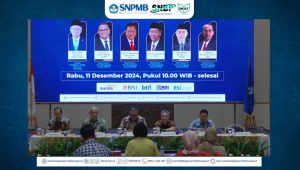In a climate change era, sustainability is an essential principle in natural resources management which involved controlling the environmental impact and socio-economics (Brennan and Owende, 2010). In general, environmental quality is declined due to human activities. A considerable amount of water used for agricultural, municipal, and industrial purposes will generate wastewater that contains pollutants, including nitrogen (N) and phosphorus (P) (Cai et al., 2013). In addition to the wastewater generation, the global human sewage contributes approximately 87% and 88% in forms of N and P, respectively (Morée et al., 2013). These portions must be managed and treated correctly, which otherwise will cause eutrophication in the water bodies. Therefore, it is worth exploring the possibility of harvesting any quantity of N and P from wastewater through nutrient recovery in microalgae cell to achieve long-term sustainability and improve surface water quality (Yulistyorini, 2016).
Concerning global nutrient requirement, as well as renewable energy and water reuse from wastewater, microalgae are the robust microorganisms to recover nutrient and carbon from various wastewater type to produce biomass feedstock for bio-fertilizers or even for biofuel (Brennan and Owende, 2010; Cai et al., 2013; Batstone et al., 2015; Mo and Zhang, 2013). Nutrient recovery from wastewater through microalgae assimilation is a promising approach to integrating the algae for the bioremediation of wastewater and producing biofuels and added value bioproducts (Yulistyorini, 2016; Unc et al., 2017). This study investigates the ability of the green freshwater microalgae to recover nutrients in their cell to produce algal biomass feedstock. The research was conducted in the laboratory-controlled condition, which focused on nutrient recovery in the green microalgae cultivated in photobioreactors.
Microalgae can grow rapidly in wastewater and produce biomass that can be used to produce biofuels, fine chemical products, and bio-fertilizers. This study was conducted to investigate the nutrient recovery from wastewater through microalgae biological uptake. The green microalgae of C. reinhardtii 11/32C used in this study and cultivated in Bold’s Basal Media (BBM). The algae culture was placed in a 2 liter of a photobioreactor for approximately in 14 days. The green C. reinhardtii 11/32C was cultivated in the following conditions: photoperiod 16 hr light, 8 hr dark (16:8); light intensity 250±5 µEm-2s-1; and temperature 20±3oC, which run in triplicates. The liquid samples were collected every two days over 14 days for Total Suspended Solids (TSS), VolatileSuspended Solids (VSS), Nitrate (NO3-), Phosphate (PO43-), Chlorophyll-a, Total Phosphorus (TP), and Total Nitrogen (TKN). The results revealed that green microalgae could uptake nutrients at the rate of 2.13 mg N/l/d and 0.5 mg P/l/d. These results could recover up to 5.9 % and 1.3% of N and P in their cell, respectively.
Author: Agoes Soegianto
Link:
http://www.envirobiotechjournals.com/article_abstract.php?aid=11084&iid=323&jid=4









